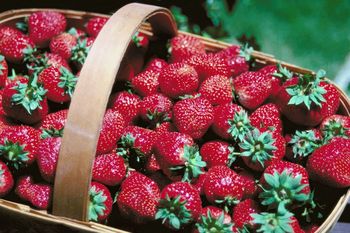How to Grow Strawberries
Understanding how to grow strawberries is easy and rewarding. If you would like to grow your own strawberries, follow these simple steps below:
Location for Growing Strawberries
When growing strawberries you need to choose the location carefully. As they can be severely damaged due to frost, it is best to plant them in the highest area of your garden. Strong winds can also cause harm to the plant and so a shielded section of your garden is best for your strawberries to grow. Another key element for strawberry plant growth is sunshine. Therefore, you need to consider not only where the sunniest location in your garden is, but also where the sun falls for the longest duration.
For many varieties the best results come from being planted in September. However, as strawberries are particularly sensitive to frost, some prefer to wait until mid April.
The soil
It is best to check the pH levels of your soil before you plant the strawberries. The healthiest pH level for your strawberry plants is 6.5. If your soil is not currently at this level you will need to buy some good quality organic compost and mix this with your original soil. Alternatively you could choose to buy a compost bag and grow the strawberry plants directly out of this.
Planting your Strawberries

How to Grow Strawberries
You need to place your strawberries plants approximately 40 cm apart in straight rows. You must also ensure that the roots are never exposed and that they are not too high or low in the soil.
Caring for your strawberries
Before the strawberries have become properly established in the ground they need regular watering. However, once they are established (around May) they should not need any extra water. Having said this, once the fruit begins to swell they may need some additional watering again.
If using compost, extra feeding is not necessary. However, if you do feed the strawberry plants this should happen as you see the fruits forming in late spring. A weak tomato based solution is recommended, which is high in potassium. Nitrogen based feed however is not advised, as this will produce higher leaf growth rather than the required fruit growth.
Once the fruits begin to grow and begin to weigh the whole plant down, you should place straw or black plastic on the soil in order to protect the fruits from rotting. If using black plastic, make sure you pierce holes for draining.
If the strawberries are in danger of being eaten by birds, place light-weight plastic netting should over them, making sure not to touch the plants using wooden posts.
After cropping
After the last strawberry has been removed from the plant, cut everything back and remove the foliage, leaving a stump of about 10cm. This should then grow new leaves within approximately three weeks.
A strawberry bed will not last more than three years before the crop gets diseased or the fruits grow significantly smaller. Therefore, it is recommended that a rotational system is introduced, planting another crop such as rhubarb or attractive flowers.
